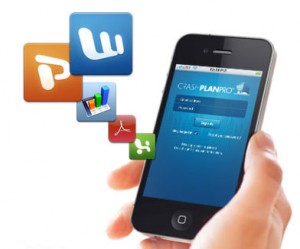 Earlier this week we talked about how to back up your data using an external hard drive, so that your data will be safe even if your devices meet an untimely fate (like those of Wired writer Mat Honan). But cloud backup is important too, and as the major industry players push services like iCloud, Google Drive and Amazon Backup, it becomes more important than ever to make sure that remote data is secure.
Earlier this week we talked about how to back up your data using an external hard drive, so that your data will be safe even if your devices meet an untimely fate (like those of Wired writer Mat Honan). But cloud backup is important too, and as the major industry players push services like iCloud, Google Drive and Amazon Backup, it becomes more important than ever to make sure that remote data is secure.
It’s important to note that hackers got into Honan’s computer through what’s called “social engineering,” which describes exploiting the people involved in security rather than hardware or software. Specifically, they were able to find out the last four digits of his credit card from Amazon, and were able to use that, combined with his billing address retrieved from an online lookup, to have his Apple ID reset by Apple tech support. So, while password security is essential, it’s not enough.
Honan lists what he should and shouldn’t have done:
– don’t use the same prefix for multiple emails
– do create a dedicated email only for password recovery
– don’t link together vital accounts
– if you use Gmail, use 2-factor authentication
– don’t use Find My Mac
You can read his full account for more explanation, but even if you take precautions, the worst can still happen, and that’s what backup is for. For cloud backup it’s a good idea to diversify cloud service providers, and if you want be extra-safe, build some redundancy into your storage. There are lots of very solid option out there, including the usual suspects, like Google Drive, Dropbox, Mozy, and Norton. But here are a few that you may not have heard of:
Backupify: Specifically designed for Google Apps, Salesforce, and social media accounts. 10GB of social media storage will only run you $4.99 a month, 50GB will set you back $19.99. Google Apps storage (including one-click restore) starts at $3/user/month for 35GB of data. All files are stored in Amazon Web Services, which also provides encryption.
Picturelife: Designed just for photos. Sync and remotely store all of your pictures in one (cloud-based) location. 5GB comes free, 100GB will run you $7/month, 300GB will run you $15/month.
Crashplan: This is the full-service, remote backup for everything and anything. There are levels for everyone from the single home office user to elaborate enterprise solutions, with extremely competitive pricing. We especially like them because they do their own hosting, so if something happens to Amazon or Google you won’t lost access to your files and backup at the same time.
So your best strategy for backup is twofold: at least one copy in the cloud and at least one copy locally. It can’t protect you from everything, but it can assure that if the worst happens you won’t lose it all.